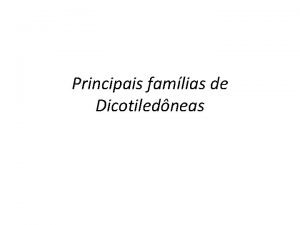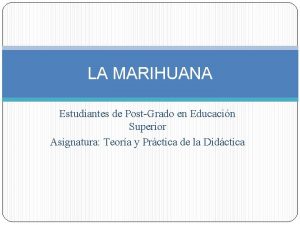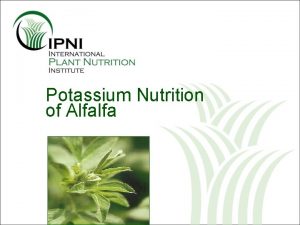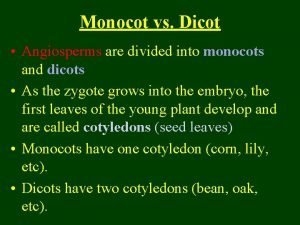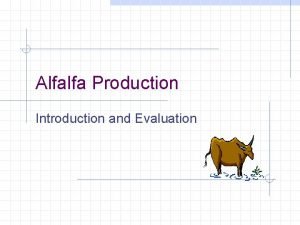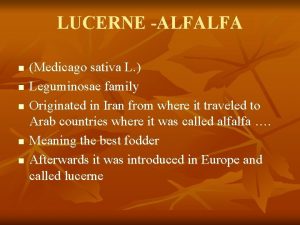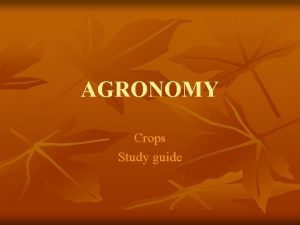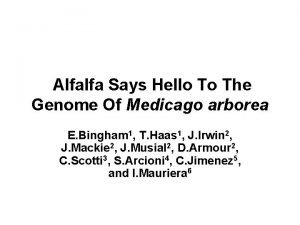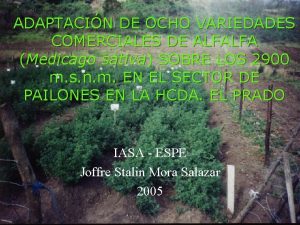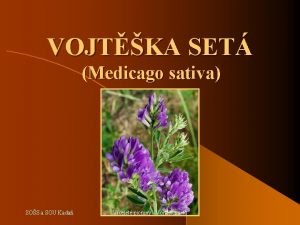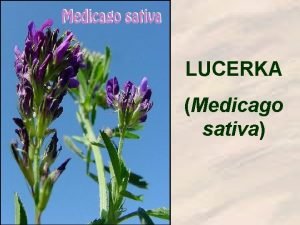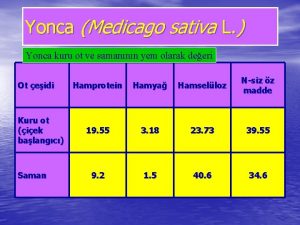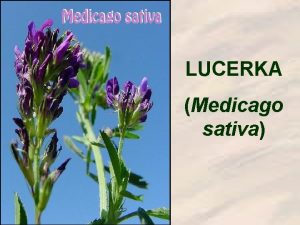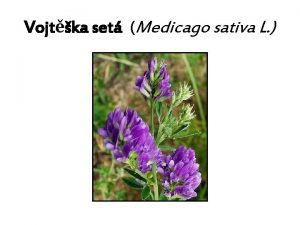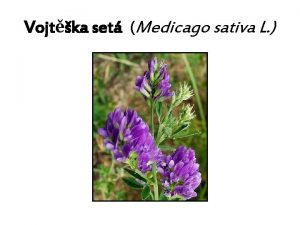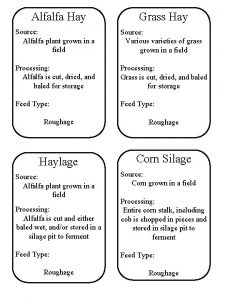Alfalfa Medicago sativa Introduction Known as the queen













- Slides: 13

Alfalfa (Medicago sativa)

Introduction • • Known as the “queen of forages” Alfalfa(Medicago L. ), also called Lucerne Originated near Iran First introduced to America in 1736 by colonists • Oldest cover crop in the United States • Very high yield legume • Very good pasture crop

Description • • • Is a herbaceous perennial legume Mature alfalfa usually has 5 -25 stems Height 15 -25 inches (38 -63 cm) Stems slender Leaves alternating on stem Leaflets are linear oblong and toothed towards end

Area of Adaptation • • • Worldwide in distribution Widely grown in US. Accounts for 30 mill. acres of production Wide range of soil and climate are suitable For best production well drained soils, with neutral p. H and good fertility are required

Primary Use • Used mostly for hay crops • Has highest feed value of all hay crops if harvested late bud or early flower stage • Produces greatest amount of protein per acre • Often mixed with corn silage • Alfalfa can be made into silage, pellets, meal or cubes • Can be used as pasture crop

Cultivars • Many cultivated varieties are available with specific characteristics for: • Climate, • Soil-related, • Insect, • Disease problems.

Soil Requirements • Deep permeable soils • Adequate moisture supply during growing seasons • Alfalfa is very sensitive to poor drained soil and compacted soil conditions that restrict root growth • Does well in loam soils • Alfalfa does not tolerate p. H levels below 6. 2 especially in seedling stage

Germination and Seedling Development • Primary root emerges near the hilum • Penetrates soil as unbranched taproot • Hypocotyledonary area straightens and elongates • The cotylendory leaves emerge • Foliar leaves have a slender petiole • Vegetative buds develop in the axils of the cotylendonary leaves

First 15 days

15 -30 days

Planting Date/Rate • Most plant in early spring or late summer • Influenced by precipitation, temp, and cropping patterns • Spring planting allows for harvest during seedling year, but weeds are a problem • Late summer planting means less competition with weeds, proper seeding must allow for adequate seedling development before onset of winter • planting rate of 12 -15 lb/A • # of cutting ----- 4 -5

Diseases/Insects • More than 20 diseases are a problem for alfalfa • Include fungal bacterial wilts, leaf spots, crown and root, viruses, and nematodes • Insects- a number of insect pests for alfalfa • The insects that most interfere with forage production are • Potato leafhopper, alfalfa weevil, spotted alfalfa aphid, alfalfa plant bug

Certified seed • 60/bu • Cost $2/# • 200, 000 seeds/#

